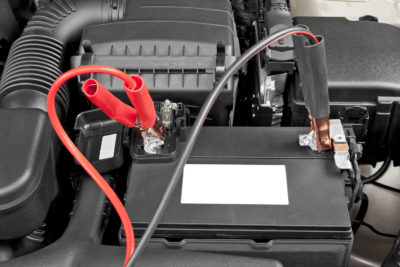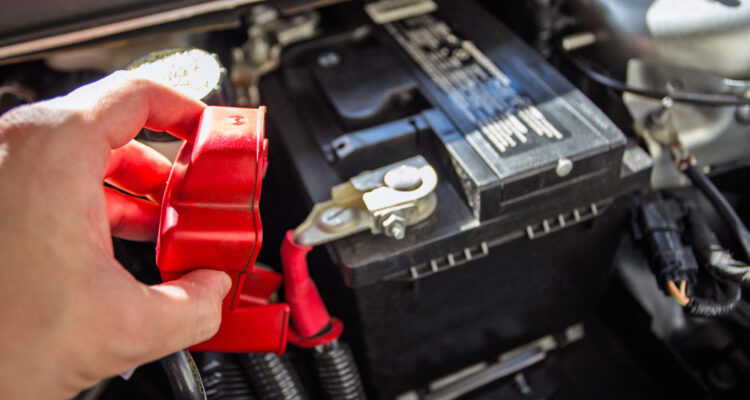It’s that time of the year again when outside temperatures are cold, sunlight hours are shorter and we drive to and from work mostly in the dark part of the day. Vehicle electrical systems are put to the test, as we use the vehicle lights, defrosters, heater, wipers and other options such as heated seats, heated steering wheels and of course, the entertainment system. At the same time, battery capacity drops as the temperature drops and it takes longer to put a charge back into the battery, so one day you go out to start your vehicle and all you here is some clicks instead of the starter motor turning over the engine. Your battery needs help.
Most automotive batteries are lead/acid batteries although there are a few that are of lithium-ion construction. There are positive and negatively charged plates inside the battery and when your vehicle’s engine is running, the alternator pushes a charge back into the battery plates and the battery stores the charge. When you crank the engine, the battery supplies energy from the plates to the starter, ignition and fuel systems to start the engine. This depletes the charge on the battery plates.

There are other ways the battery charge can be depleted. Leave your lights on and the battery will become completely discharged in a few short hours. Modern automobiles have many onboard computers and electronic modules. These can also drain the charge from a battery in a few hours but the manufacturers have designed these modules to go into a “sleep” mode when not in use, so they only have a small drain on the battery. Even so, if your vehicle has many electrical options and you park it for extended periods, perhaps a few weeks at a time, then the small drain can be enough to discharge the battery significantly. One way of preventing this is to install a battery maintainer (a small trickle charger with electronic circuitry that controls the charging) and plug in the charger when the vehicle is parked. Not only will the battery maintainer keep the battery charged, it will keep the battery warm so it can accept a charge in cold weather faster.
Battery maintenance will also help your battery. The cable connections need to be clean and tight, and the battery case needs to be clean. A layer of dust or dirt on top of the battery will attract moisture and the moisture creates a path for the electricity to leak from the negative to positive battery posts and become discharged.
There are times when you need to store a vehicle or a battery. You should disconnect the negative battery cable first and be careful to not let your wrench touch the positive terminal while unbolting the negative cable or you will create a big electrical surge. It usually won’t harm the vehicle but can burn you and damage the wrench.
Store a battery in a cold or cool and dry location. This can even be in the vehicle! Keeping a battery cool slows its chemical reactions so it maintains its charge longer. Some say you should never store a battery on a concrete floor as this will cause it to discharge, but the real reason is that moisture wicks through the concrete and creates humidity around the battery so it discharges faster. If your concrete floor is dry, the battery can sit on it. Otherwise, place it on a piece of wood while storing it. Charge the stored battery at about 2 to 3 month intervals to keep it fully charged.
Vehicle electrical systems have become so reliable that we seldom give them a second thought, but they are the heart of your vehicle. Modern diagnostic equipment can check out the condition of your battery and charging system is just a few seconds, so consider having it done the next time you take your vehicle in for service.



